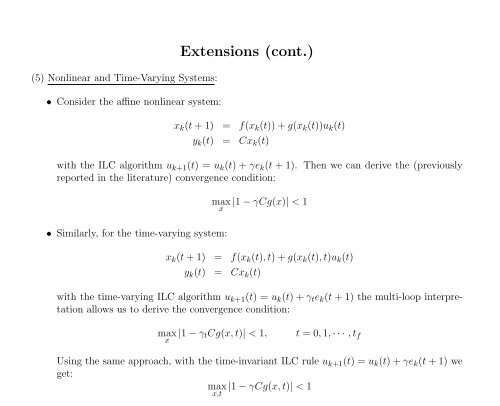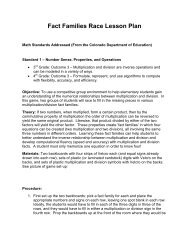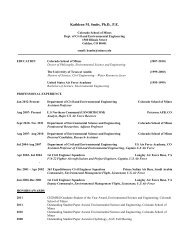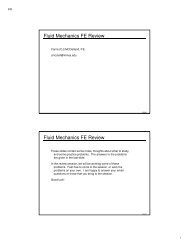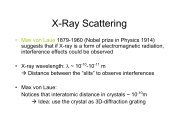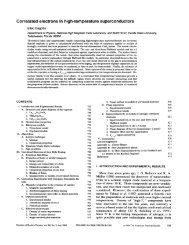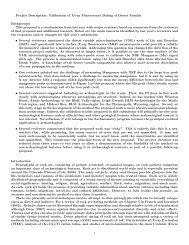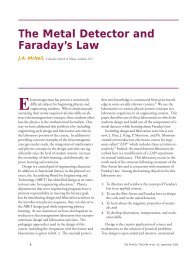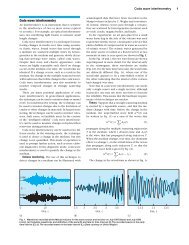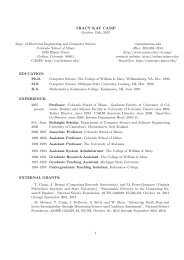An Introduction to Iterative Learning Control - Inside Mines
An Introduction to Iterative Learning Control - Inside Mines
An Introduction to Iterative Learning Control - Inside Mines
You also want an ePaper? Increase the reach of your titles
YUMPU automatically turns print PDFs into web optimized ePapers that Google loves.
(5) Nonlinear and Time-Varying Systems:<br />
• Consider the affine nonlinear system:<br />
Extensions (cont.)<br />
xk(t + 1) = f(xk(t)) + g(xk(t))uk(t)<br />
yk(t) = Cxk(t)<br />
with the ILC algorithm uk+1(t) = uk(t) + γek(t + 1). Then we can derive the (previously<br />
reported in the literature) convergence condition:<br />
• Similarly, for the time-varying system:<br />
max |1 − γCg(x)| < 1<br />
x<br />
xk(t + 1) = f(xk(t), t) + g(xk(t), t)uk(t)<br />
yk(t) = Cxk(t)<br />
with the time-varying ILC algorithm uk+1(t) = uk(t) + γtek(t + 1) the multi-loop interpretation<br />
allows us <strong>to</strong> derive the convergence condition:<br />
max<br />
x |1 − γtCg(x, t)| < 1, t = 0, 1, · · · , tf<br />
Using the same approach, with the time-invariant ILC rule uk+1(t) = uk(t) + γek(t + 1) we<br />
get:<br />
max |1 − γCg(x, t)| < 1<br />
x,t


